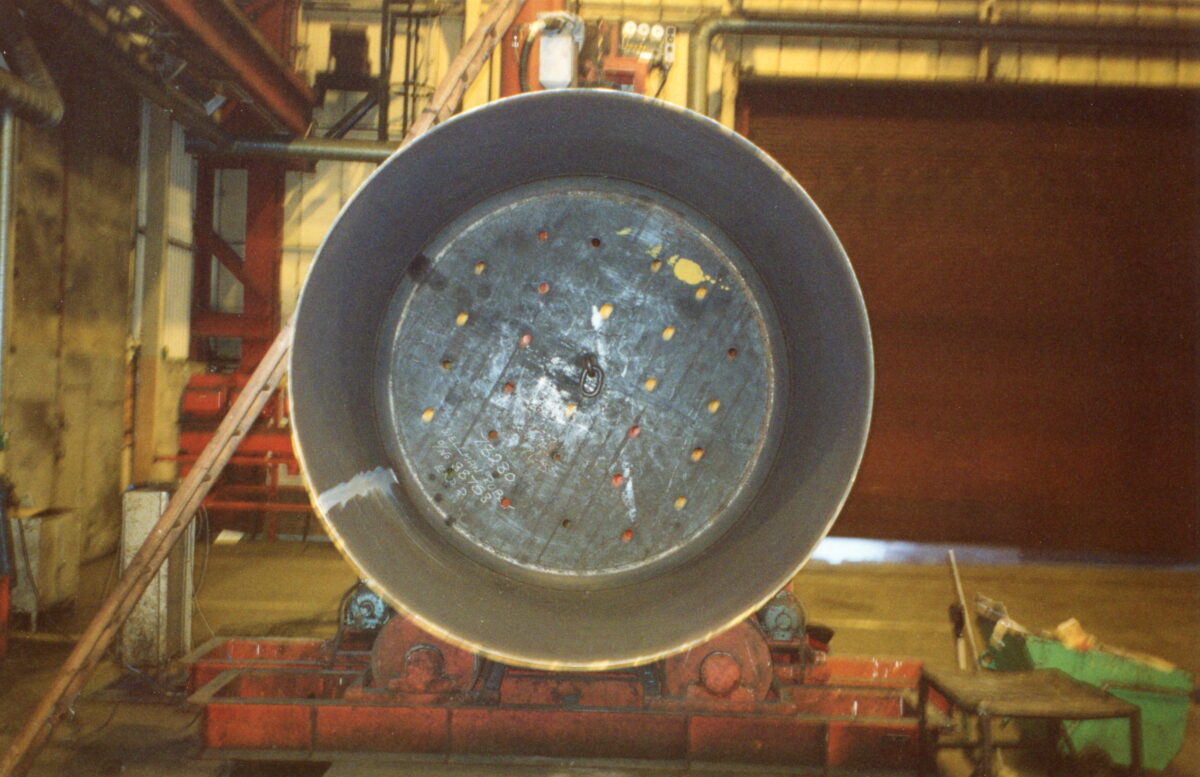
On Monday 12th February 2001 Alan Beavan OBE, Chris Smith and I drove up in my car from Chatham to the Oldbury factory in the West Midlands of Wellman Robey to check on progress of KC’s new boiler.
In 1999 we had a new and unusually difficult boiler insurance surveyor who took a rather gloomy view of KC’s existing boiler and made noises about how it needed to be replaced immediately. As a result we brought in one of our friends at the ever helpful Babcock, a man much experienced in these sorts of boilers to give us a second opinion. He took a much less gloomy view. That resulted in further discussion with our insurer and the boiler was granted its annual certificate as usual.
However it was a warning so we set out to look at fund raising for a new boiler. By 2001 the dice were all lined up. The Heritage Lottery Fund offered the bulk of the £100K estimated cost of the project (about £171K in today’s money) with partnership funding coming from our own resources from excess of income over expenditure, a grant of £5K from the ever helpful Sir John Smith through his Manifold Trust and a small amount from the PSPS. For all of this we were very grateful.
We sought tenders from six boiler makers. Three were large companies Wellman Robey, Beel Industrial Boilers and Hoval whose Swiss arm had provided a boiler for the paddle steamer Montreux on Lake Geneva not long before. Three were from small heritage engineering firms including the long established and very experienced Israel Newton.
In the end we settled on Wellman Robey who not only provided a very competitive price but who were also one of the few boiler makers to tender who still had the right kit to press out traditional domed end plates. And we wanted the new boiler to have domed end plates. Modern boilers have flat end plates like the lids on a tube of Smarties.

The first part to be manufactured was the outer shell pictured here on an earlier visit.

By 12th February 2012 the end plates had been attached and manholes cut. It always surprises me now as it surprised me back then how big a person can make their way through quite a small boiler door. 5ft 10ins tall and a good 14 stone, Alan Beavan was not exactly sylphlike but he always managed to get in and out of our boiler even though by then he was in his sixties.

The furnace had also been largely finished by then although not yet fitted inside the boiler. Note the expansion hoop around its middle. Boilers start off cold. They got hot, sometimes very hot. Steel expands and that sets up potential stresses and strains in a boiler. A well made boiler is designed to try to minimise these stresses and strains. Hence our desire for domed end plates and the expansion hoop and so on around the boiler.
It was a good day. We were well pleased with the progress. We left the factory with a spring in our step in the knowledge that things were progressing along the correct timeline.
The journey back was another thing. We left the factory around 3pm expecting to be home by six or thereabouts. Once we hit the M25 traffic was solid and in the end it it was gone 11pm before I was able to drop a by then rather tired Alan and Chris off at their homes back in Medway.
For more on KC’s 1999-2001 boiler refit see here.
Kingswear Castle returned to service in 2023 after the first part of a major rebuild which is designed to set her up for the next 25 years running on the River Dart. The Paddle Steamer Kingswear Castle Trust is now fund raising for the second phase of the rebuild. You can read more about the rebuilds and how you can help if you can here.
John Megoran
This article was first published on 12th February 2021.


